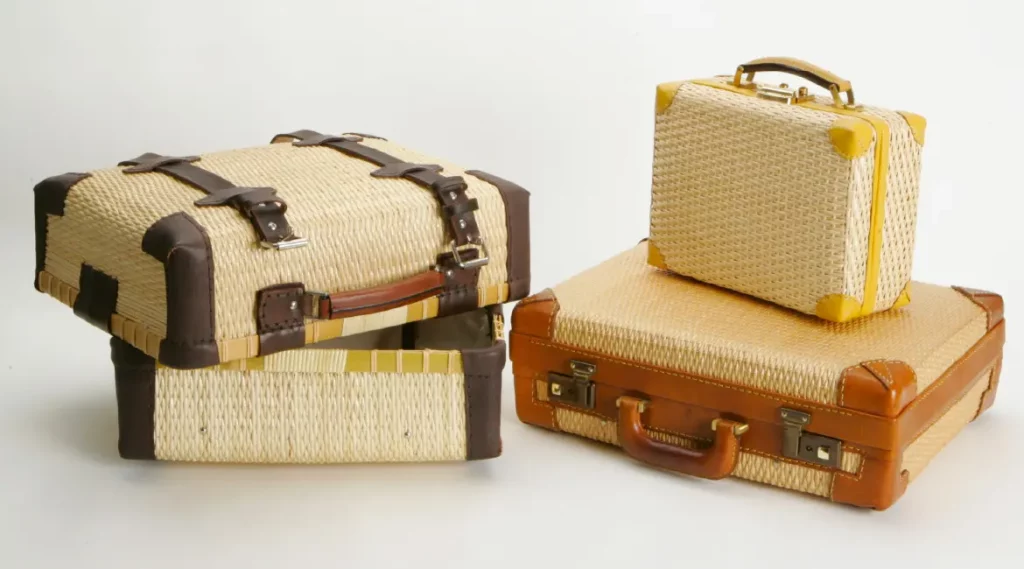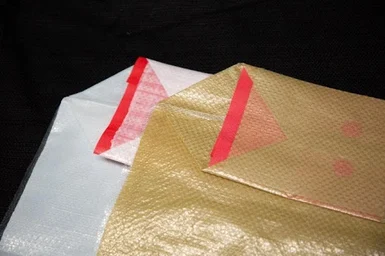Introduction
In the world of industrial packaging, selecting the right type of bag is essential for maintaining product quality, safety, and efficiency during transport and storage. For decades, traditional bags like jute sacks, paper bags, and stitched polypropylene bags have been widely used across industries. However, in recent years, Ad*Star bags have emerged as a strong contender, especially in sectors like cement, agriculture, and chemicals.
So, which type of bag is better—Ad*Star or traditional? Let’s dive into a detailed comparison to understand their differences and see which option comes out on top.
What Are Traditional Bags?

Traditional bags typically refer to sacks made from materials such as jute, paper, or stitched woven polypropylene (PP). These bags have been the standard for packaging for years due to their availability and familiarity in the market. Jute and paper bags are biodegradable and considered eco-friendly, while stitched woven PP bags offer better durability and moisture resistance.
What Are Ad*Star Bags?
AdStar bags are a highly innovative packaging solution that stand out due to their unique construction and material composition. These bags are manufactured using a specialized polypropylene fabric that is either coated or laminated. This not only makes the bags strong and water-resistant but also improves their durability under tough conditions. Unlike traditional woven sacks that are stitched at the seams, AdStar bags are created using a heat-sealing process. This method eliminates the need for stitching, which can be a weak point in traditional bags. By removing stitches and seams, the bags achieve a fully sealed finish, which is resistant to leakage and bursting under pressure.
One of the most defining features of Ad*Star bags is their patented block bottom design. This design allows the bags to maintain a firm, brick-like shape once filled, which is a significant advantage in terms of stacking, storage, and transportation. They remain upright and stable, reducing the chances of falling over or tearing during handling. This structural integrity also ensures that the contents remain intact and protected, even in rough environments like warehouses, construction sites, or during long-distance shipping.
Developed by Starlinger, an Austrian company renowned for its advanced machinery in the textile and plastics industry, AdStar technology represents a major leap forward in industrial packaging. These bags have been widely adopted in industries such as cement, chemicals, food grains, and fertilizers, where packaging strength, moisture resistance, and space efficiency are crucial. Overall, the advanced design and manufacturing process of AdStar bags make them a highly reliable and practical choice for modern packaging needs.
Durability and Strength
One of the most significant advantages of Ad*Star bags is their superior strength. The block bottom design and heat-sealed construction provide exceptional resistance to tearing, bursting, and impact. This makes them particularly suitable for heavy products such as cement, grains, and fertilizers. Traditional bags, especially paper and jute ones, are more susceptible to tearing under pressure or in damp environments.
Stitched PP bags offer better durability than paper or jute, but their stitched seams can still be a weak point under stress. In contrast, Ad*Star bags eliminate stitching altogether, reducing the risk of seam failure.
Moisture Resistance
Moisture is a major concern for packaging products like cement or food grains. Ad*Star bags come with a laminated or coated exterior that offers excellent resistance to water and humidity. This ensures that the contents stay dry, even in challenging storage conditions.
Traditional bags such as jute and paper absorb moisture easily, which can lead to product degradation. While stitched woven PP bags are better in this regard, they may still allow moisture to seep through the seams or stitching holes.
Shape Retention and Stackability
Ad*Star bags are designed to maintain a brick-like shape when filled. This block bottom structure makes them easier to stack, store, and transport. They sit upright without toppling over and create a cleaner, more organized storage area, especially in warehouses or retail settings.
Traditional bags often lack this structure. Paper and jute bags can lose their shape quickly once handled, making them harder to stack and more likely to fall or shift during transport. Woven PP bags fare slightly better, but without the block bottom, they still don’t offer the same stability as Ad*Star bags.
Weight and Handling
Ad*Star bags are lightweight, which reduces overall packaging weight and helps lower transportation costs. Despite their light weight, they don’t compromise on strength or protection.
Traditional bags vary in weight depending on the material. Jute bags are relatively heavy and can be bulky to handle. Paper bags are lighter but not as durable, while PP woven bags strike a balance. Still, when compared to Ad*Star bags, they often require more careful handling to avoid damage.
Cost Efficiency
At first glance, Ad*Star bags may seem more expensive than some traditional options. However, their longer lifespan, reduced wastage due to damage, and improved efficiency in stacking and shipping often result in cost savings in the long run.
Traditional bags might be cheaper to purchase initially, but the costs associated with damage, spillage, and product loss can add up over time. In high-volume industries, these differences can have a significant financial impact.
Environmental Impact
Sustainability is an important consideration for businesses today. Traditional jute and paper bags are biodegradable, which gives them an edge in terms of environmental friendliness. However, they fall short in durability and moisture protection.
Ad*Star bags, though made from polypropylene, are recyclable and reusable. They are often used multiple times before being discarded, which reduces their overall environmental footprint. Moreover, their robust structure reduces the need for double bagging or over-packaging, further minimizing waste.
Printing and Branding
Ad*Star bags offer excellent printability. The laminated surface allows for high-quality, vibrant graphics that don’t fade easily. This makes them a strong tool for branding and marketing, especially in retail environments where packaging plays a role in consumer perception.
Traditional bags like jute and paper can be printed on, but the print quality may not be as vibrant or durable. Stitched woven bags also offer printing options, but the texture of the fabric can limit clarity.
Also Read: Benefits of Using AD STAR Bags: A Smarter Packaging Choice
Conclusion
Choosing between AdStar bags and traditional bags ultimately depends on your specific needs. If your priority is strength, moisture resistance, stackability, and long-term cost efficiency, AdStar bags clearly come out ahead. They are especially ideal for demanding industrial applications where reliability is crucial.
On the other hand, if you’re looking for a biodegradable option for lighter, non-sensitive products, traditional materials like jute or paper might be suitable. However, for most modern packaging needs—particularly in sectors like cement, grains, and chemicals—Ad*Star bags offer unmatched performance and value.
As industries continue to evolve and demand smarter packaging solutions, Ad*Star bags are quickly becoming the go-to choice for businesses that value durability, efficiency, and presentation.
